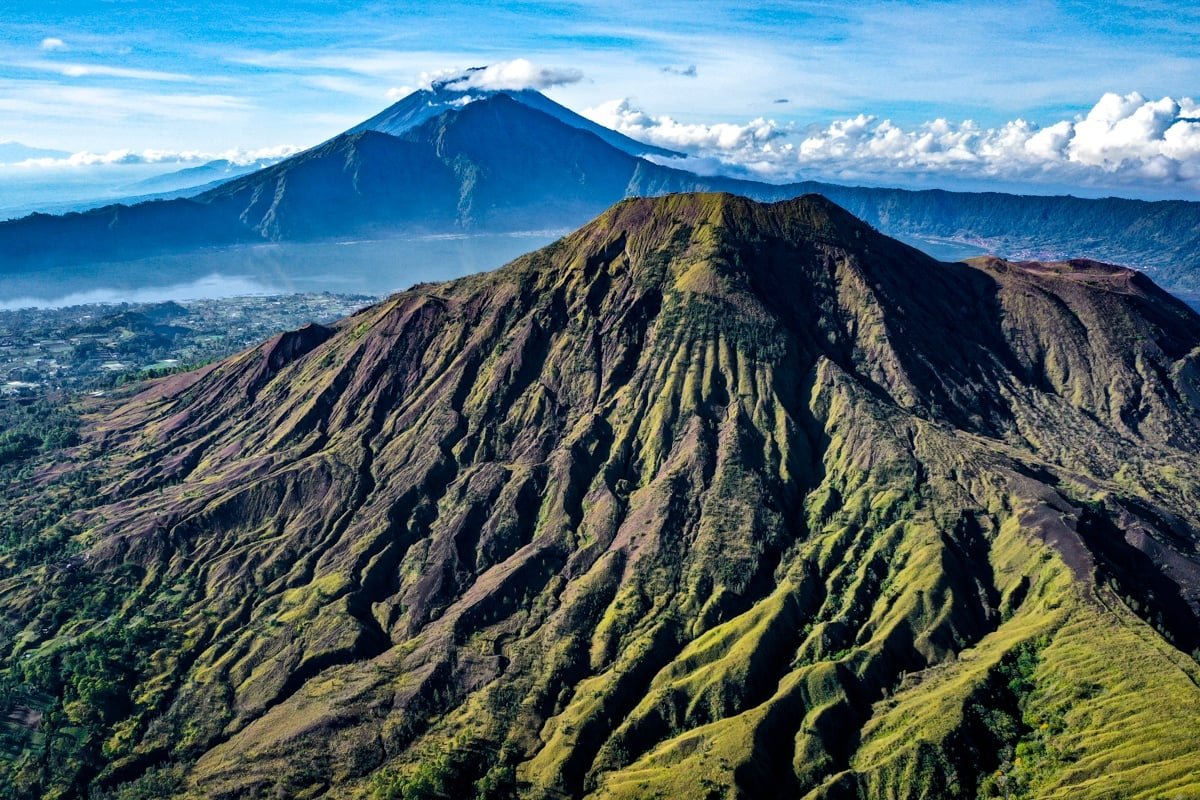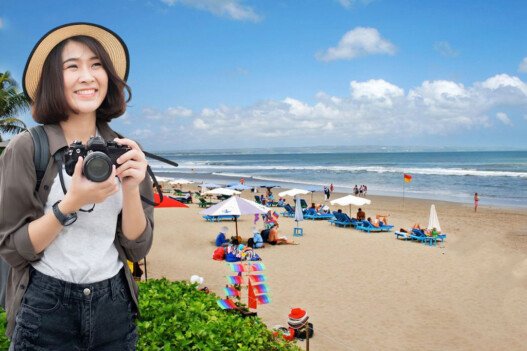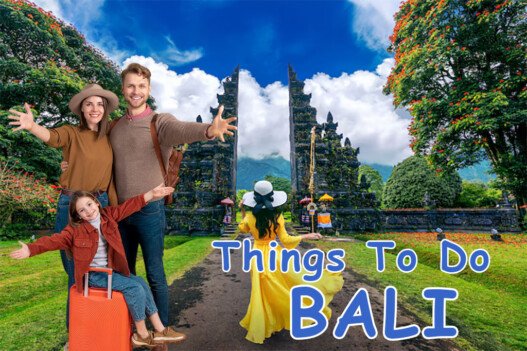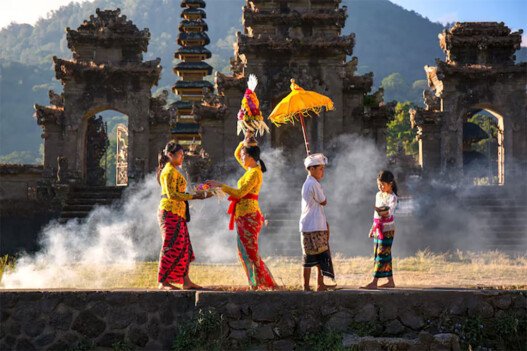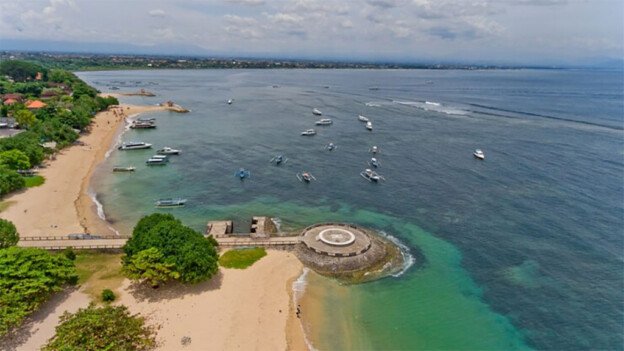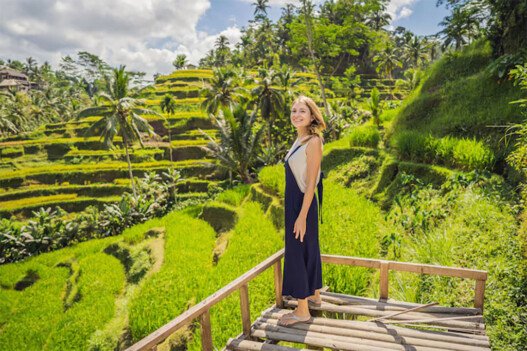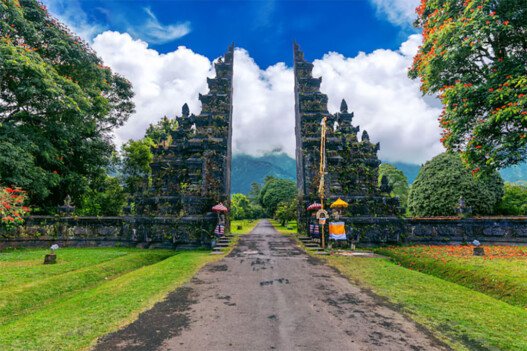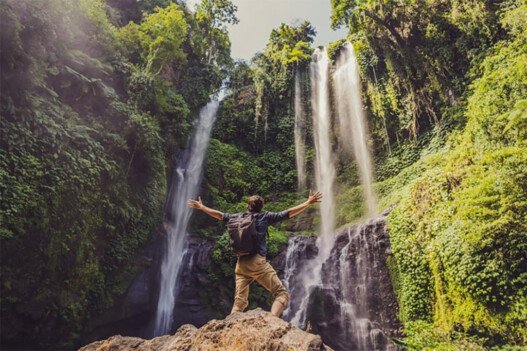Bali, the Island of the Gods, offers more than pristine beaches and ancient temples. Hidden within its lush landscapes are some of Indonesia’s most spectacular volcanic peaks, each promising an adventure that combines physical challenge with breathtaking natural beauty. From the sacred heights of Mount Batur to the challenging slopes of Mount Agung, volcano trekking in Bali provides an unforgettable journey into the heart of this mystical island.
🏔️ Bali’s Volcanic Landscape: A Geological Wonder
Bali sits along the Pacific Ring of Fire, making it home to several active and dormant volcanoes that have shaped both its geography and culture for millennia. These towering giants aren’t just geological formations – they’re sacred sites deeply woven into Balinese Hindu tradition, believed to be the dwelling places of gods and spirits.
The island’s volcanic activity has blessed Bali with incredibly fertile soil, creating the terraced rice fields that cascade down mountainsides and the lush tropical vegetation that makes the island so visually stunning. Understanding this geological foundation helps trekkers appreciate not just the physical beauty they’ll encounter, but the cultural significance of these sacred peaks.
🌅 Mount Batur: The Crown Jewel of Bali Trekking
The Experience That Defines Bali Adventure
Mount Batur (Gunung Batur) stands 1,717 meters above sea level and represents the most popular volcano trek in Bali – and for good reason. This active volcano offers the perfect introduction to Indonesian volcano trekking, combining accessibility with spectacular rewards.
The classic Mount Batur sunrise trek begins in the early hours of morning, typically around 3:30 AM. As you ascend through the darkness with only headlamps lighting the way, anticipation builds with every step. The trail winds through volcanic rock formations and past steaming vents that remind you of the mountain’s active nature.
What Makes Mount Batur Special
The summit experience is truly magical. As dawn breaks, the sky transforms from deep purple to brilliant orange, illuminating Lake Batur below and providing panoramic views across Bali’s central highlands. On clear days, you can see Mount Agung, Mount Rinjani on nearby Lombok, and even Java’s volcanic peaks in the distance.
The trek typically takes 2-3 hours to reach the summit, making it accessible to moderately fit hikers. The descent offers different perspectives and often includes stops at natural hot springs where you can soak tired muscles while enjoying lake views.
Practical Information for Mount Batur
- Difficulty Level: Moderate
- Duration: 4-6 hours total
- Best Time: April to October (dry season)
- Starting Point: Toya Bungkah village
- Cost: 350,000 – 500,000 IDR with guide
⛰️ Mount Agung: Bali’s Highest and Most Sacred Peak
The Ultimate Bali Volcano Challenge
Mount Agung, rising 3,031 meters above sea level, represents the ultimate volcano trekking challenge in Bali. Known as the “Mother Mountain,” this sacred peak holds profound spiritual significance for the Balinese people. The majestic Besakih Temple, often called the “Mother Temple of Bali,” sits on its slopes, emphasizing the mountain’s religious importance.
Two Routes to the Summit
Pasar Agung Route (The Easier Path): Starting from Pasar Agung Temple at 1,500 meters, this route offers a more gradual ascent. The trek takes 4-6 hours to reach the summit, passing through beautiful forest sections and offering stunning views of eastern Bali.
Besakih Route (The Traditional Challenge): Beginning from Besakih Temple at 1,000 meters, this longer route follows the traditional pilgrimage path. Expect 6-8 hours of challenging hiking through diverse ecosystems, from tropical forests to alpine vegetation.
The Summit Experience
Reaching Mount Agung’s summit provides an unparalleled sense of achievement. The panoramic views encompass all of Bali, neighboring Lombok, and Java on exceptionally clear days. The crater rim offers glimpses into the volcanic interior, reminding trekkers of the powerful forces that created this landscape.
Important Considerations
- Difficulty Level: Challenging to Very Challenging
- Duration: 8-12 hours total
- Best Time: April to October
- Special Requirements: Experienced guides mandatory
- Cost: 800,000 – 1,200,000 IDR with guide
- Note: Check volcanic activity status before booking
🌿 Mount Abang: The Hidden Gem
Bali’s Third Highest Peak
Mount Abang, standing at 2,152 meters, offers a different volcano trekking experience. Less crowded than its famous neighbors, this trek provides solitude and pristine natural beauty. The trail passes through dense forests filled with tropical birds and unique flora.
The summit of Mount Abang offers spectacular views of Mount Batur and Lake Batur from above, providing a unique perspective that many trekkers miss. The trail is less developed, offering a more wilderness-style experience for those seeking adventure off the beaten path.
Why Choose Mount Abang
- Less crowded trails
- Rich biodiversity
- Unique viewing angles of Batur caldera
- More affordable trekking option
- Better for wildlife spotting
🎒 Essential Preparation and Packing Guide
Physical Preparation
Volcano trekking demands reasonable fitness levels. Start preparing at least 2-3 weeks before your trip with regular cardio exercise, leg strengthening, and practice hikes if possible. Focus on building endurance rather than speed – volcano treks are about sustained effort over several hours.
Essential Gear Checklist
Footwear: Sturdy hiking boots with good ankle support and grip. The volcanic terrain can be loose and slippery, especially during descent.
Clothing:
- Moisture-wicking base layers
- Warm jacket for summit temperatures
- Rain protection
- Long pants to protect from volcanic rock
- Warm hat and gloves for early morning starts
Equipment:
- Powerful headlamp with extra batteries
- Plenty of water (3-4 liters recommended)
- High-energy snacks
- First aid kit
- Sunscreen and sunglasses
- Camera with extra batteries
- Cash for guide tips and hot springs
What Not to Bring
Avoid cotton clothing, heavy unnecessary items, and anything valuable that could be damaged. Most tour operators provide basic equipment, but personal comfort items should be your priority.
👨🏫 Choosing the Right Guide and Tour Operator
Why Guides Are Essential
Local guides aren’t just recommended for Bali volcano treks – they’re essential for safety and cultural understanding. Experienced guides know weather patterns, trail conditions, and can navigate in darkness. They also provide cultural context that enriches the experience.
What to Look for in a Guide Service
- Licensed and experienced guides
- Safety equipment provided
- Small group sizes (maximum 8-10 people)
- Good reviews and recommendations
- Clear pricing without hidden costs
- Emergency procedures in place
Questions to Ask Tour Operators
- What’s included in the price?
- What happens in case of bad weather?
- What safety measures are in place?
- How experienced are the guides?
- What’s the maximum group size?
- Are permits included?
🌤️ Best Times for Volcano Trekking
Dry Season Advantages (April to October)
The dry season offers the most reliable weather for volcano trekking. Clear skies mean better summit views, lower rainfall reduces trail difficulty, and cooler temperatures make hiking more comfortable. This is peak trekking season, so expect more crowds and higher prices.
Wet Season Considerations (November to March)
While challenging, wet season trekking offers unique advantages: fewer crowds, lush green landscapes, and lower prices. However, increased rainfall means muddy trails, reduced visibility, and higher cancellation rates. Only experienced trekkers should consider wet season ascents.
Monthly Breakdown
- May to August: Best weather, highest crowds
- April and September: Good weather, moderate crowds
- October to November: Transition period, unpredictable weather
- December to March: Wet season, challenging conditions
🏥 Safety Considerations and Emergency Procedures
Understanding Volcanic Risks
Bali’s volcanoes are active, and conditions can change rapidly. Mount Agung last erupted in 2017-2019, causing temporary closures. Always check current volcanic activity levels with Indonesian authorities before planning treks.
Common Safety Issues
- Altitude-related problems
- Dehydration and exhaustion
- Injuries from loose volcanic rock
- Getting lost in darkness or fog
- Weather-related dangers
Emergency Preparedness
- Carry emergency contact information
- Inform others of your trekking plans
- Consider travel insurance that covers adventure activities
- Know basic first aid
- Understand evacuation procedures
Health Considerations
- Consult doctors if you have heart conditions
- Bring personal medications
- Understand altitude effects
- Stay hydrated throughout the trek
- Listen to your body and don’t push beyond limits
🌺 Cultural Significance and Respect
Sacred Mountains, Sacred Traditions
Balinese people consider volcanoes sacred dwelling places of gods and ancestors. Understanding this cultural context enhances your trekking experience and ensures respectful behavior.
Cultural Guidelines for Trekkers
- Dress modestly, especially near temples
- Follow guide instructions regarding sacred areas
- Don’t remove anything from the mountain
- Be quiet and respectful during sunrise moments
- Participate respectfully in any ceremonies encountered
Temple Etiquette
Many volcano treks pass Hindu temples. Remove shoes before entering, dress conservatively, and don’t point feet toward sacred objects. Small donations (5,000-10,000 IDR) are appreciated but not mandatory.
📸 Photography Tips for Volcano Trekking
Capturing the Perfect Sunrise
Volcano sunrises offer incredible photography opportunities, but require preparation. Bring extra batteries (cold temperatures drain them quickly), protect equipment from dust and moisture, and practice night photography techniques beforehand.
Best Shots to Capture
- Headlamp trails during ascent
- Summit crater views
- Panoramic landscapes
- Cultural moments with guides
- Wildlife and flora encounters
- Personal achievement moments
Technical Tips
- Use tripods for low-light conditions
- Shoot in RAW format for better editing flexibility
- Protect lenses from volcanic dust
- Capture both wide landscapes and detail shots
- Don’t forget to put the camera down and enjoy moments directly
🌊 Post-Trek Activities and Recovery
Natural Hot Springs
Many volcano treks include stops at natural hot springs, particularly around Mount Batur. These geothermal pools provide perfect muscle recovery after challenging hikes. Popular options include Toya Devasya and Batur Natural Hot Spring.
Nearby Attractions
- Traditional villages like Trunyan and Penglipuran
- Lake Batur boat trips
- Coffee plantation tours
- Temple visits (Besakih, Pura Ulun Danu Batur)
- Local markets and cultural experiences
Recovery and Reflection
Take time to process your volcano trekking experience. Many trekkers find these adventures transformative, providing not just physical achievement but spiritual and cultural insights into Balinese life.
💰 Budget Planning for Volcano Trekking
Cost Breakdown
Mount Batur Sunrise Trek: 350,000 – 500,000 IDR
- Guide services
- Transportation from meeting point
- Light breakfast at summit
- Hot spring access (optional)
Mount Agung Trek: 800,000 – 1,200,000 IDR
- Professional guide
- Porter services (optional)
- Safety equipment
- Temple permits
Additional Costs to Consider:
- Transportation to starting points: 100,000 – 300,000 IDR
- Meals and accommodation: 200,000 – 500,000 IDR per day
- Gear rental: 50,000 – 150,000 IDR per item
- Tips for guides: 50,000 – 100,000 IDR
- Hot springs entrance: 15,000 – 45,000 IDR
Money-Saving Tips
- Book with local operators rather than hotel concierges
- Share transportation costs with other trekkers
- Bring your own snacks and water
- Choose group treks over private guides
- Visit during shoulder season for better prices
🎯 Conclusion: Your Bali Volcano Adventure Awaits
Volcano trekking in Bali offers more than just physical challenge – it provides deep connection with Indonesia’s natural power and spiritual traditions. Whether you choose the accessible beauty of Mount Batur, the ultimate challenge of Mount Agung, or the hidden trails of Mount Abang, each trek promises unforgettable memories and personal achievement.
The key to successful volcano trekking lies in proper preparation, respectful attitudes, and choosing experienced guides who prioritize safety. These sacred peaks have witnessed countless sunrises and will continue long after your visit, but the memories and personal growth from your volcano trekking adventure will last a lifetime.
Start planning your Bali volcano trek today, and prepare to discover why these ancient peaks continue to captivate adventurers from around the world. The mountains are calling – will you answer?
Remember: Always check current volcanic activity levels, weather conditions, and local regulations before planning your trek. Respect local customs, prioritize safety, and leave no trace to preserve these incredible natural treasures for future generations.

